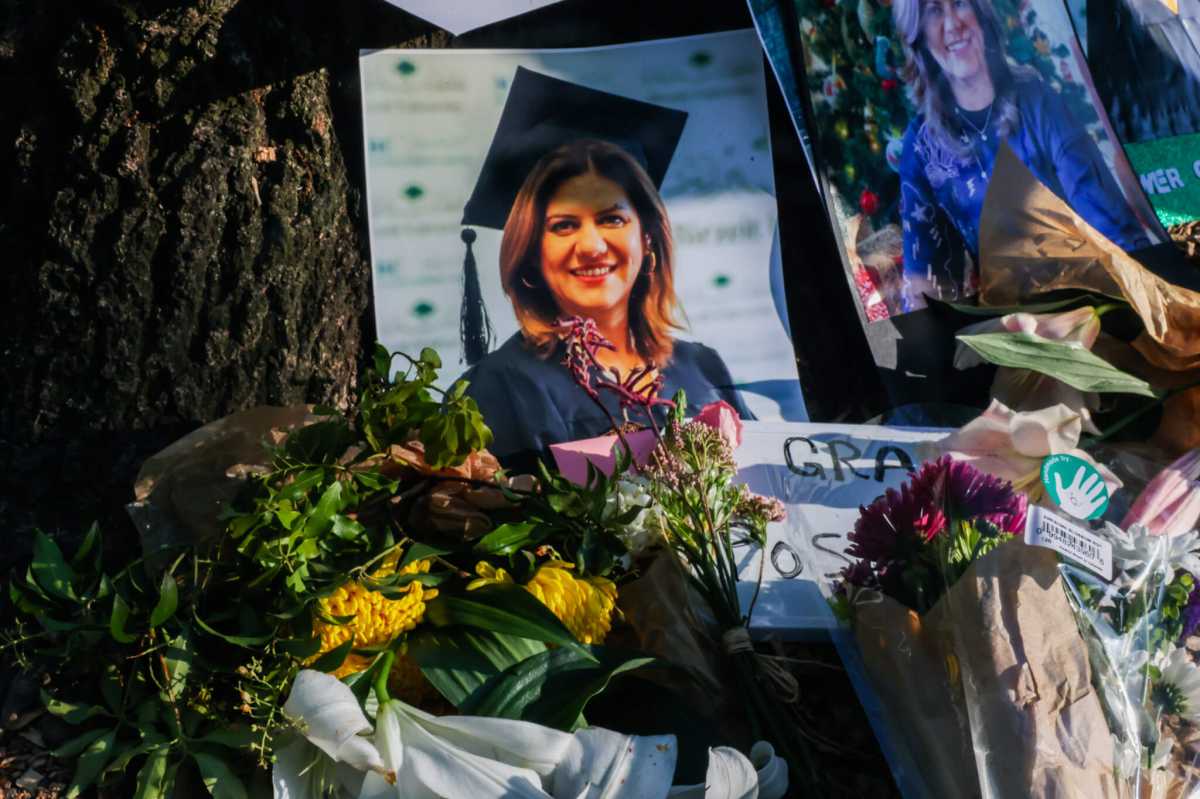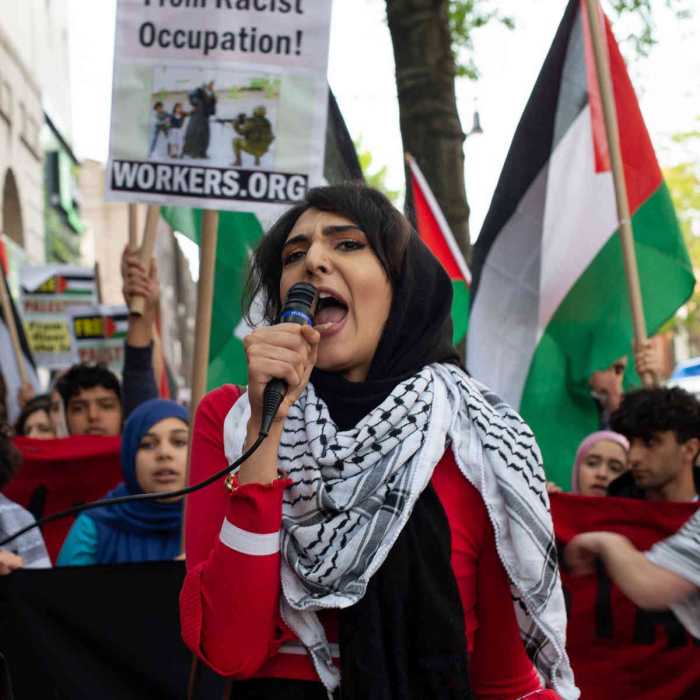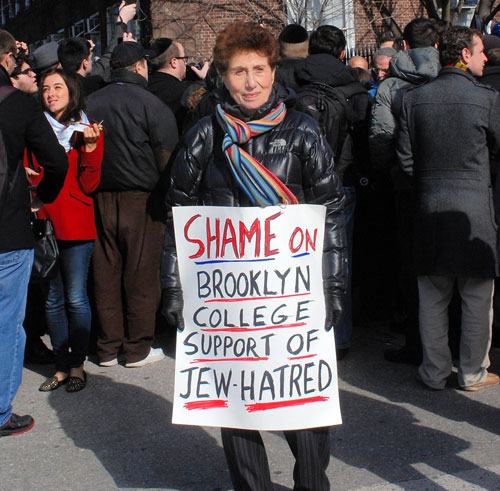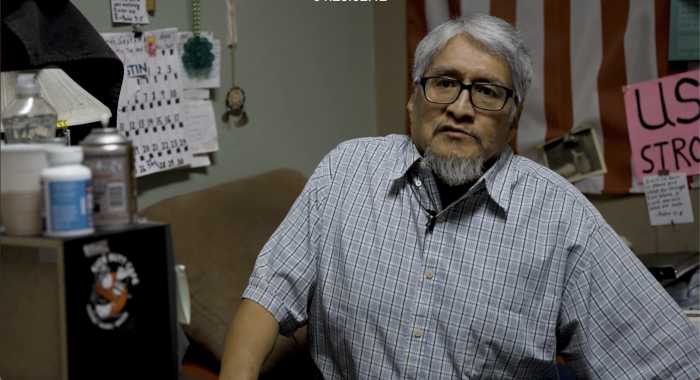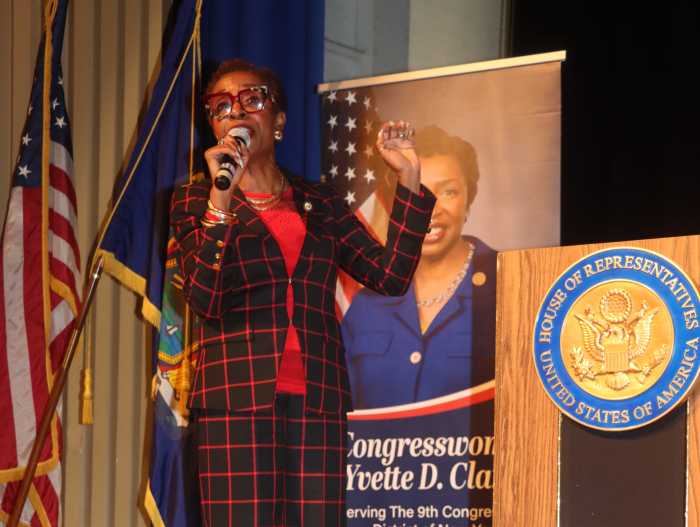Amid annual marches and rallies streaming through Bay Ridge on May 15, a quiet vigil beside the Brooklyn Museum honored the life of Shireen Abu Akleh, a Palestinian-American journalist who was shot and killed in the West Bank on May 11.
The death of a reporter working thousands of miles away felt much closer to home for many in the city, especially Bay Ridge, the home of one of the largest Palestinian communities in the country. A bit north, in Bed-Stuy, one Palestinian expat was acutely aware of the loss — and wanted to provide a space for herself and her community to acknowledge it.
“I lived in Palestine 26 years, I was actually born where Shireen Abu Akleh, the journalist that we organized the vigil for, was killed,” said Ramz, who asked that her last name not be used. “So that was a very personal cause to me.”
Abu Akleh, who had worked for news service Al Jazeera for 25 years, was killed during an Israeli Defense Forces raid of a refugee camp in the city of Jenin. While witnesses say Abu Akleh, who was 51, was shot by IDF soldiers, the allegation has been denied by Israeli authorities.
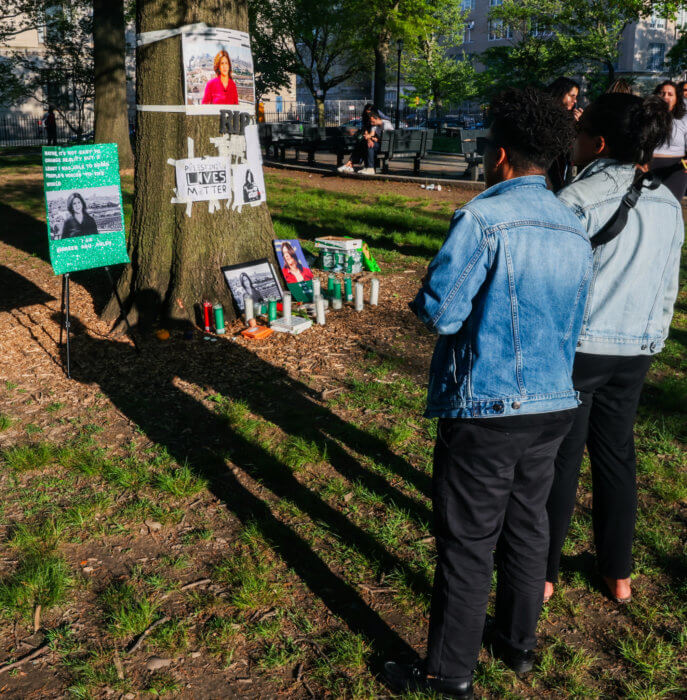
The journalist became a fixture in Palestinian homes during the Second Intifada in the early 2000s, Ramz said.
“She was the face of reporting everything that was happening in my city, it was the way we knew what was happening with our neighbors, our relatives in other cities,” she said. “In so many ways, she was the voice of the truth, of what’s happening on the ground.”
Ramz moved to the U.S. in 2016 to get her master’s degree and moved to Brooklyn a few years later. The community in Bed-Stuy makes her feel a little bit closer to home, she said. Her family still lives in Jenin, but hearing the news about what’s going on in Palestine, she sometimes feels distanced — because she knows they are safe.
“But then something like this happens and reminds you that what you left behind is still there, and your numbness is gone, and you just want to be there, because physically and mentally, you are there,” Ramz said. “And there’s nothing you can do about it. I think that was the reason I decided to organize the vigil.”
Brooklyn remembers Shireen Abu Akleh
After spending some time talking with friends and family in New York and in Palestine, Ramz decided she wanted to organize a small vigil for her community to remember Abu Akleh. While the journalist was best known in Palestine, she was beloved by many in the Arab community at large, she said.
The vigil was set to take place on the same day as the annual Nakba Day march, but sought to provide a quiet space for community and mourning, rather than political action.
“All I wanted was a small intimate space for Palestinians, or the Palestinian community who’s in New York, but specifically in Brooklyn, because there aren’t so many places … where we can come together to connect, and sometimes just speak Arabic, which makes us feel a little closer to home,” Ramz said.
She chose to host it on the steps of the Brooklyn Museum, where, two years earlier, in similar company, she had attended a quiet vigil for Sarah Hegazi, an Egyptian woman who died by suicide after being arrested in Egypt for waving a rainbow Pride flag.
What started as a small gathering for Ramz’s friends and neighbors quickly gained traction online, drawing attention from people all over the city. She worried that it would get “out of control,” becoming something far from the candlelit vigil she envisioned — but, even with a crowd of about 300 people, it didn’t.
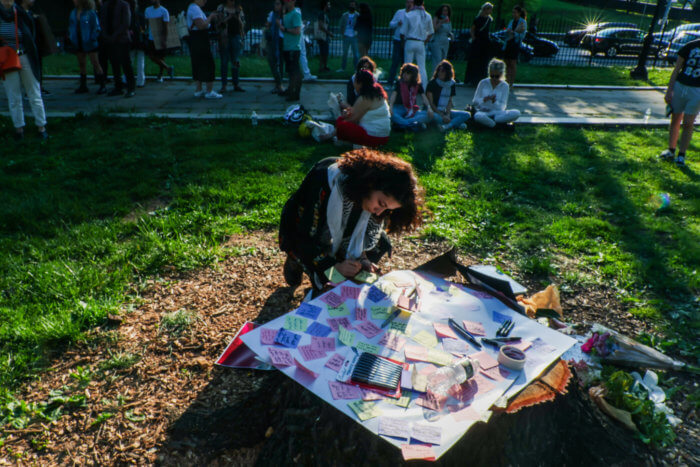
People from all five boroughs joined Ramz and her friends from Philadelphia and New Jersey — as well as a few of Abu Akleh’s former colleagues, Palestinian students, and more.
Ramz’s roommate, Saba, who helped to organize the vigil, said she hadn’t heard of Abu Akleh before her death — but the reporter’s story resonated with her.
“In any situation where there is an oppressor and an oppressed, where there is a community that is fighting for justice, people will always try to find ways to silence communities,” Saba, who wanted to be identified by her first name only, told Brooklyn Paper. “It’s happening in my own motherland, in India, where there is a party in charge that is silencing journalists and academics.”
Attendees shared their stories about Palestine and Abu Akleh, read poems, and shared coffee and dates. The fruit is a symbol of giving back to the people who came to pay their respects, Ramz said, and is simply an important part of Palestinian culture.
“We wanted people to not only know about Shireen, about Palestine, but also about us as a community in Brooklyn that is very visible,” she said. “Not only to assimilate … but also integrate and share something about us and our traditions.”
Of everyone who spoke, Ramz was particularly struck by a nun who worked in a Palestinian school in Jerusalem for 15 years, she said, who shared stories of her experiences as the Second Intifada began.
The support of the community
People approached Saba to talk about Abu Akleh as she stood next to the museum with a picture of her, directing latecomers to the vigil’s new location after they moved away from the museum steps.
“I did have random people coming up to me wanting to take a photo of me with the poster or coming up and saying, ‘Oh, Shireen meant a lot to us, can you I hold this poster and can you take a photo of me,’” she said. “These were folks who didn’t even know about the vigil … just seeing that the impact was so far and so wide. It’s heartbreaking.”
The turnout showed the side of New York City that’s welcoming and inclusive to all people and cultures, Ramz said. Amid the sorrow of the day, she also cried happy tears as the tight-knit community gathered around her.
“I think a lot of the response was probably from the queer community,” Ramz said. “I think mostly because the spreading of the word started from the queer Arab community, and there’s often this implicit code, if one says something, we all trust it, it’s a very close and strong community.”
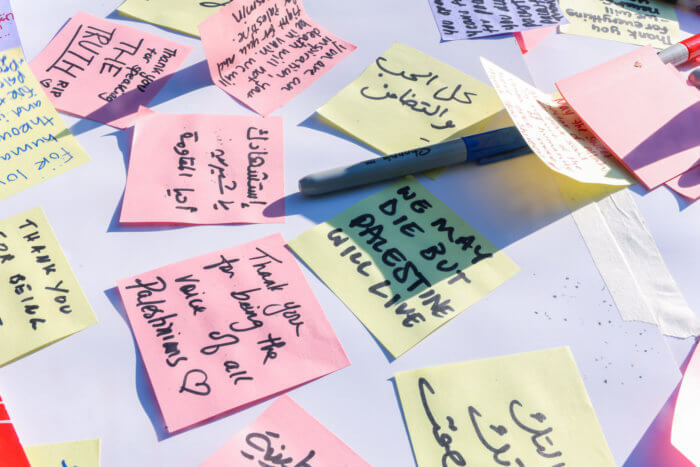
People she had never met before came up to her to ask how they could help, she said, volunteering to stay behind and funnel people toward the new location with Saba. The joint effort was part of what made the vigil so meaningful to her.
The vigil also allowed Ramz to donate some money to a new scholarship fund established at Birzeit University in the West Bank in Abu Akleh’s honor. When the vigil started to increase in scope, she quickly realized that the personal fund she had planned to use to buy water and other materials wasn’t enough — and reached out to some local Arab and Palestinian organizations for help.
They gave her the money she needed and more, and the excess went right to the “Shireen Abu Akleh Award for Outstanding Achievements in Media” scholarship, which supports Palestinian journalists.
“We felt so close, we felt that we knew her, and she was a friend, she was a family member,” Ramz said of Abu Akleh. “It kind of became a part of our collective memory, in a way. It’s an entire generation that grew up being inspired by her power, her courage, her ability to be everywhere, put herself in places that can be risky, for the reason that she wanted to be closer to people, closer to the truth.”


